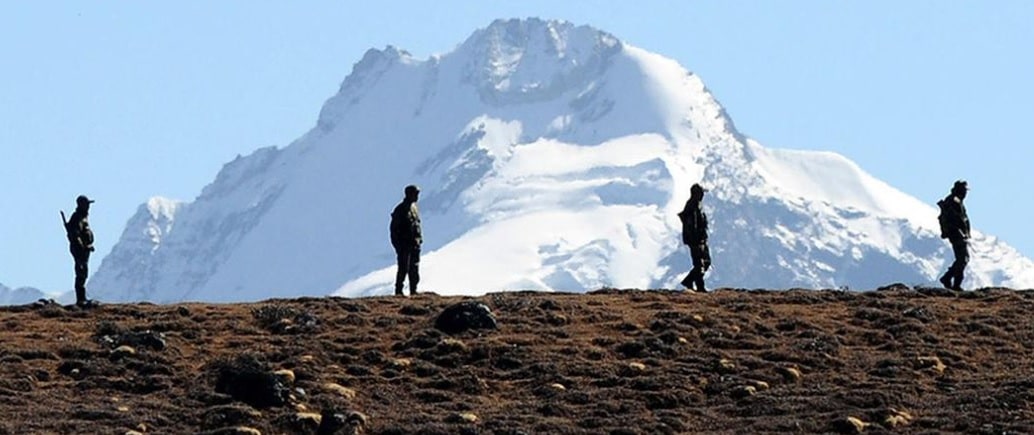What’s in today’s article?
- Why in news?
- Border Dispute in Eastern Sector of LAC
- What is McMahon Line?
- The dispute between India and China is eastern sector
- Indo-China 1962 war and Arunachal Pradesh
- News Summary: China announces renaming of 11 places in Arunachal Pradesh
- Why is China giving names to places that are in India?
- What does China seek to gain from making these claims?
Why in news?
- In an attempt to lay claim to areas inside the Indian territory, the Chinese government announced it would standardise the names of 11 places in Arunachal Pradesh.
- This is Beijing’s third such list on Arunachal Pradesh, attempting to rename places by giving them what it calls standardised geographical names.
- In 2017, the Chinese Ministry of Civilian Affairs put out a similar list of six places.
- Again, in December 2021, released a list of 15 places that it sought to rename.
Border Dispute in Eastern Sector of LAC
Image caption: Eastern Sector of LAC
What is McMahon Line?
- The disputed boundary in the Eastern Sector of the India-China border is over the McMahon Line.
- Representatives of China, India and Tibet in 1913-14 met in Shimla to settle the boundary between Tibet and India, and Tibet and China.
- During the Shimla conference, Sir Henry McMahon, the then foreign secretary of British India, drew up the 550-mile (890 km) McMahon Line as the border between British India and Tibet.
- This line was drawn from the eastern border of Bhutan to the Isu Razi pass on the China-Myanmar border.
The dispute between India and China is eastern sector
- The McMahon line moved British control substantially northwards. This agreement ceded Tawang and other Tibetan areas to the imperial British Empire.
- Though the Chinese representatives at the meeting initialled the agreement, they subsequently refused to accept it.
- Subsequently, the Chinese government stated that it does not recognize the “illegal” McMahon Line.
- China accuses India of occupying areas in Arunachal, which it calls part of Southern Tibet.
- China claims territory to the south of the McMahon Line, lying in Arunachal Pradesh.
- China also bases its claims on the historical ties that have existed between the monasteries in Tawang and Lhasa.
Indo-China 1962 war and Arunachal Pradesh
- The Arunachal Pradesh border, that China claims to be its own territory, is the largest disputed area, covering around 90000 sq. km.
- During the 1962 war, the People’s Liberation Army occupied it but they announced a unilateral ceasefire and withdrew respecting the McMahon Line.
- However, it has continued to assert its claim over the territory. Nowadays, almost the whole of Arunachal is claimed by China.
News Summary: China announces renaming of 11 places in Arunachal Pradesh
- For the third time in six years, China has announced Chinese names for geographical features in Arunachal Pradesh, reiterating its claim to the entire Indian state.
- The areas that were named included two residential areas, five mountain peaks and two rivers.
Why is China giving names to places that are in India?
- China claims some 90,000 sq km of Arunachal Pradesh as its territory.
- It calls the area Zangnan in the Chinese language and makes repeated references to “South Tibet”.
- Chinese maps show Arunachal Pradesh as part of China, and sometimes parenthetically refer to it as “so-called Arunachal Pradesh”.
- China makes periodic efforts to underline this unilateral claim to Indian territory.
- Giving Chinese names to places in Arunachal Pradesh is part of that effort.
What does China seek to gain from making these claims?
- It is a part of the Chinese strategy to assert its territorial claims over Indian territory.
- As part of this strategy, China routinely issues statements of outrage whenever an Indian dignitary visits Arunachal Pradesh.
- It did so when the then Vice President Venkaiah Naidu went there to address the state Assembly in October 2021.
- The first batch of renaming in 2017 had come days after the Dalai Lama visited Arunachal Pradesh.
- As part of this strategy, China routinely issues statements of outrage whenever an Indian dignitary visits Arunachal Pradesh.
- Also, Chinese officials claim that the standardisation was necessary since all names used in southern Tibet were inherited through word-of-mouth for generations by minority ethnic groups.
- Hence, these names reflect that China’s proposal on the sovereignty claim of the region has a prominent historical, cultural, administrative and jurisdictional basis.
- Laying aggressive claims to territories on the basis of alleged historical injustices done to China is a part of Beijing’s foreign policy playbook.
- The claim on Taiwan is one such example.
- Also, consistent efforts are being made by China to change the facts on the ground in several disputed islands in the South China Sea.
Q1) Where is Arunachal Pradesh geographically located?
Arunachal Pradesh is a state located in the northeastern region of India. It is bordered by the Indian states of Assam and Nagaland to the south, Myanmar to the east, Bhutan to the west, and China to the north. The state is situated at the eastern end of the Himalayas and is known for its scenic beauty, rich cultural heritage, and diverse ethnic groups.
Q2) What is Shimla Conference of 1914?
The Shimla Conference of 1914, also known as the Simla Convention, was a meeting held between the British Indian government and representatives of the Tibetan government to negotiate a treaty defining the status of Tibet in relation to British India and China.
Source: China announces ‘renaming’ of 11 places in Arunachal Pradesh, including one close to Itanagar | The Wire | Indian Express
Last updated on June, 2025
→ UPSC Notification 2025 was released on 22nd January 2025.
→ UPSC Prelims Result 2025 is out now for the CSE held on 25 May 2025.
→ UPSC Prelims Question Paper 2025 and Unofficial Prelims Answer Key 2025 are available now.
→ UPSC Calendar 2026 is released on 15th May, 2025.
→ The UPSC Vacancy 2025 were released 1129, out of which 979 were for UPSC CSE and remaining 150 are for UPSC IFoS.
→ UPSC Mains 2025 will be conducted on 22nd August 2025.
→ UPSC Prelims 2026 will be conducted on 24th May, 2026 & UPSC Mains 2026 will be conducted on 21st August 2026.
→ The UPSC Selection Process is of 3 stages-Prelims, Mains and Interview.
→ UPSC Result 2024 is released with latest UPSC Marksheet 2024. Check Now!
→ UPSC Toppers List 2024 is released now. Shakti Dubey is UPSC AIR 1 2024 Topper.
→ Also check Best IAS Coaching in Delhi
























